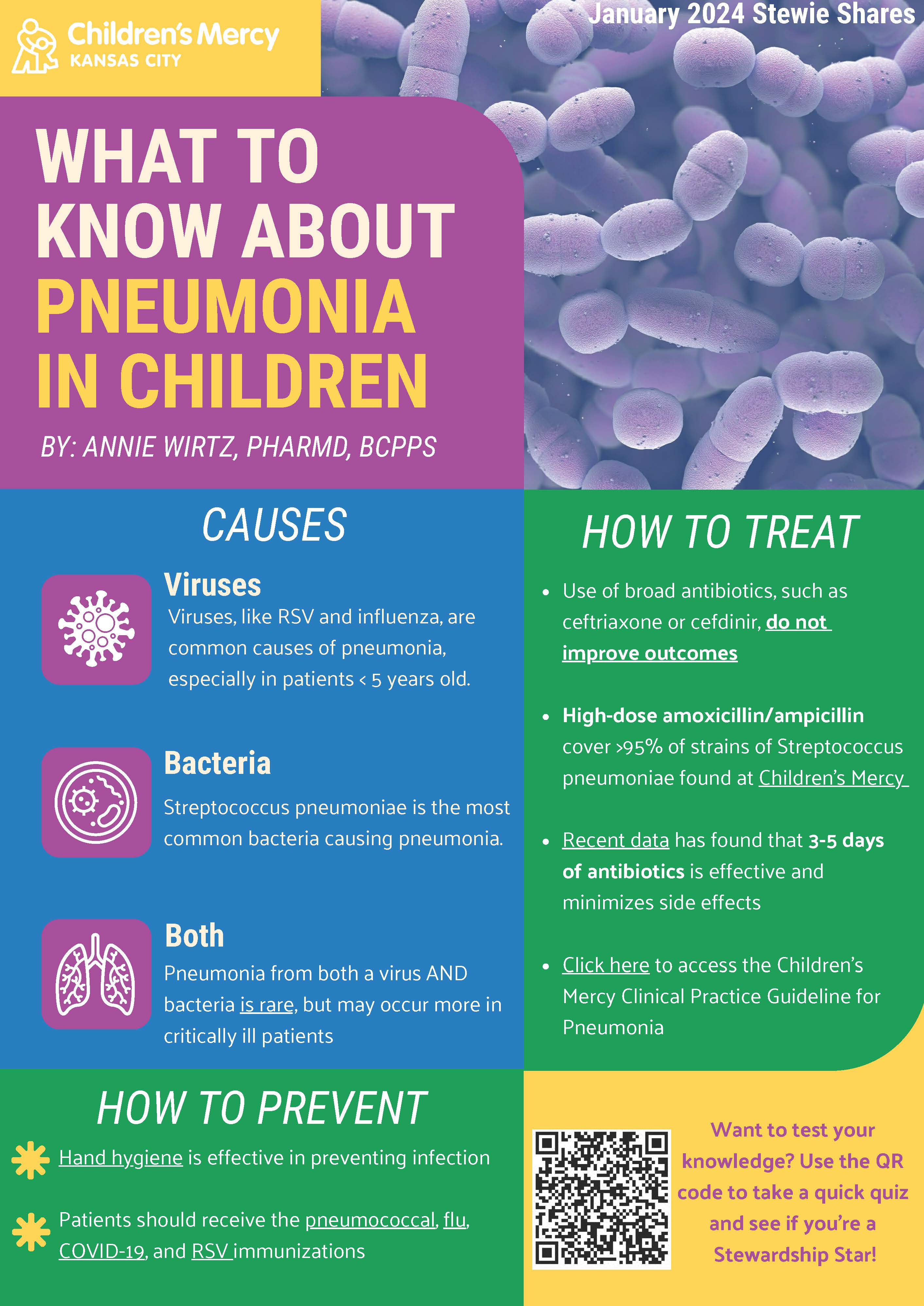Link Newsletter - January 2024
Our January issue features the latest news and updates on pediatric care from Children's Mercy clinicians.
The Spit-Up Never Ends: Managing Infantile GER and GERD: Evidence Based Strategies
“The spit-up never ends!” As pediatricians, we commonly hear exclamation like this during our day-to-day workflow, as we are asked to differentiate normal physiology from pathology. Infantile gastroesophageal reflux (GER) is a common phenomenon experienced by 70%-85% of infants within the first two months of life. For most patients, dietary changes and medication are not needed, as over 95% of patients will “grow out” of their GER without complication by 1 year of age. However, those who present with more concerning or persistent findings require prompt management to prevent complications such as inadequate weight gain or mucosal injury.1,2 Differentiating GER from true gastroesophageal reflux disease (GERD), then, is important.
Special Considerations in Immunization Practices: A Refresher for the New Year: Vaccine Update
What precautions should be taken when immunizing a patient with a bleeding disorder? Should vaccines be held in a child with respiratory symptoms? When is a vaccine truly contraindicated? The start of a new year provides a valuable opportunity to revisit the Advisory Committee on Immunization Practices (ACIP) best practice guidelines for vaccination practices, including valid instances when deferring vaccination is necessary—and commonly misperceived instances when it is not. The comprehensive list of ACIP’s contraindications and precautions for commonly used vaccines, along with conditions often incorrectly perceived as contraindications or precautions, can be found here.1
Anthrax: Outbreaks, Alerts and Hot Topics
Anthrax is now extremely rare in humans in the United States, with only a single case confirmed from 2012-2018. However, anthrax continues to occur, sometimes in significant outbreaks, in other parts of the world, especially where vaccination of livestock against anthrax is less available or less practiced. In eastern Africa, there has been a recent outbreak in five countries (Kenya, Malawi, Uganda, Zambia and Zimbabwe) involving a reported nearly 1,200 human cases and 20 deaths. These victims are assumed to have been infected mostly by contaminated meat.
Atopic Dermatitis Provider Resources Now Available: State of the Art Pediatrics
Atopic dermatitis affects 1 in 10 Americans, and up to 20% of children. This chronic skin disease can range from mild involvement requiring only moisturizers to significant life-altering disruptions requiring treatment with numerous prescriptions. Many families grow frustrated with this relentless disease, causing some providers to feel helpless in providing relief to these patients and families. Most families seek initial care with their primary care provider, who can begin by advising good skin hygiene, moisturizers, initial topical prescription medications, and avoidance of irritating agents. Often, patients request a dermatology evaluation to further aid management of their atopic dermatitis. While the Dermatology clinic is available and ready, most families want information during their initial visit with their primary care provider.
Stewardship School: What to Know About Pneumonia in Children
Check out the monthly "Stewie Shares" infographic from our Antimicrobial Stewardship team. This one-page, visually rich flyer contains information for both clinical and non-clinical audiences on current issues related to antimicrobial topics. You are welcome to print and post or link to it from your practice's website.

We want to hear from you!
Do you have ideas, questions or suggestions for future articles in The Link? Send us a note at thelink@cmh.edu.
Learn More and Subscribe to The Link
 Visit the homepage for The Link to:
Visit the homepage for The Link to:
- Find out more about the content and authors featured in The Link
- Subscribe to receive future issues by email
- Read past articles in the archive
